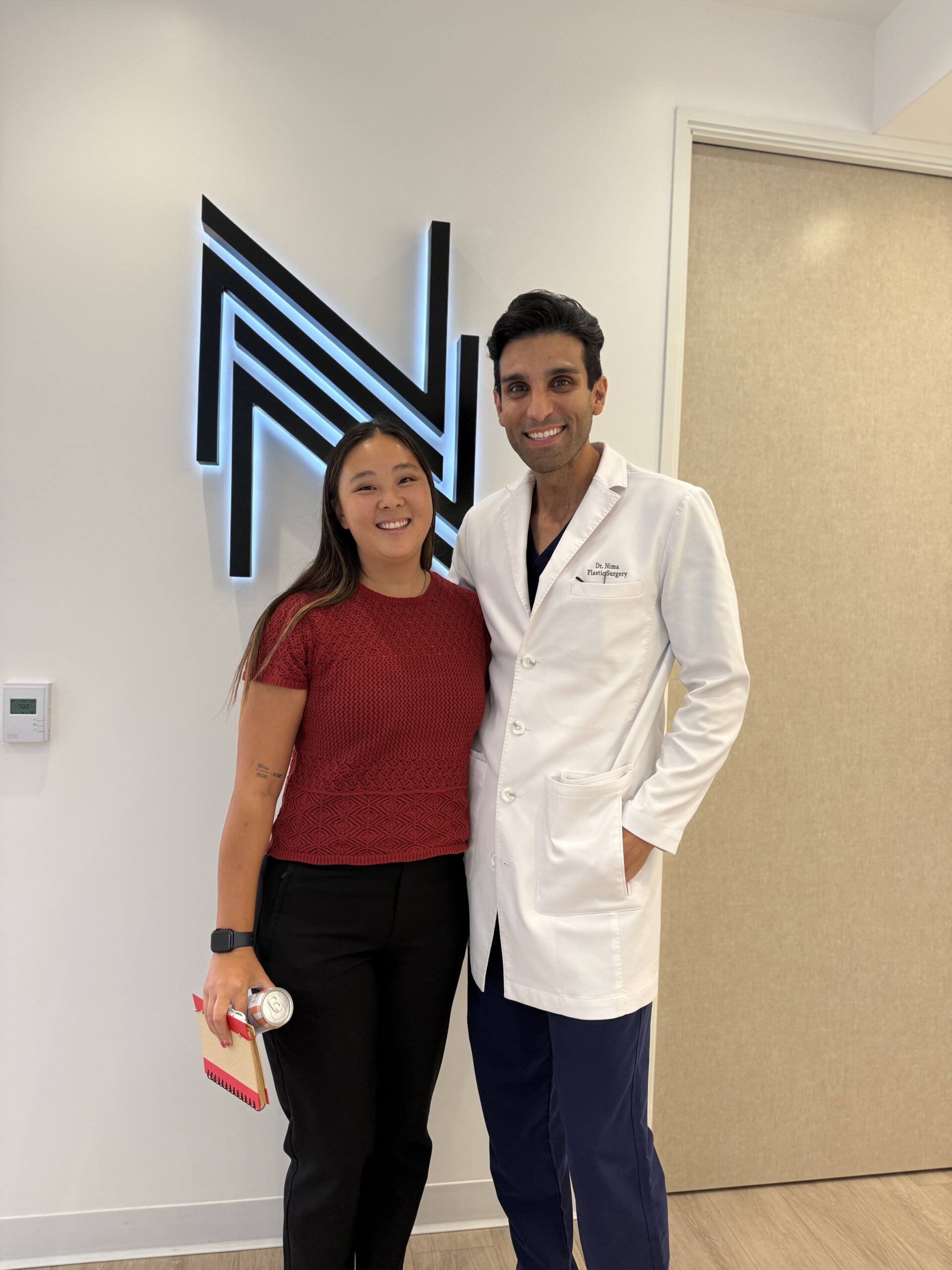
From an early age, Dr. Nima Naghshineh knew he wanted to be a surgeon. That clarity of purpose carried him from his undergraduate years at Johns Hopkins University—where he studied Biomedical Engineering (BS), Psychology (BA), and Mathematics (minor)—to the University of Pittsburgh Graduate School of Medicine, where his medical career took shape, deepening his expertise in both practice and research.
It was in Pittsburgh that Dr. Nima discovered his passion for plastic surgery. “I had the opportunity to consider a variety of specialties, but I was most drawn to plastic surgery because of the mentors who were so influential in my training,” he reflects. What appealed to him most was the field’s breadth and creativity—the chance to both restore and to reimagine.
A Practice that Balances Reconstructive and Cosmetic Surgery
Today, Dr. Nima runs his own private practice, where he intentionally combines both reconstructive and cosmetic surgery. Reconstructive surgery, as he explains, focuses on restoring form and function after illness, injury, or trauma. Cosmetic surgery, on the other hand, is elective, designed to enhance or reshape appearance across different areas of the body.
On the reconstructive side, Dr. Nima has chosen to focus exclusively on breast cancer patients. “There are many types of reconstructive procedures for trauma, other cancers, or congenital conditions,” he says, “but I narrowed my practice to concentrate specifically on breast reconstruction.” He estimates that about 40% of his patients are breast cancer survivors.
This work, he says, is the most meaningful part of his career. “During and after cancer treatment, patients are weighed down by anxiety, despair, and the physical toll of therapy. Breast reconstruction allows them to shift their focus—not on the cancer, but on what happens after. It’s an opportunity to dream again.”
On the cosmetic side, Dr. Nima maintains a much wider practice, offering a full spectrum of procedures for all genders. The balance of both reconstructive and cosmetic care gives him the broad, varied practice he originally envisioned.
Helping Patients Navigate Options
Breast reconstruction is not one-size-fits-all. Patients can choose from a variety of procedures, such as implant-based reconstruction, autologous tissue flaps (using the patient’s own tissue, often from the abdomen or back), or oncoplastic techniques that combine cancer surgery with reconstruction in the same operation.
But not every surgeon offers—or even discusses—the full range of options. That’s why Dr. Nima emphasizes the importance of doing research and finding a surgeon who will explore all possibilities with you. “Although I don’t personally perform every single type of reconstruction, I make sure my patients understand all their options. If I feel someone is a better candidate for a procedure I don’t offer, I’ll make the referral. What matters most is that the patient gets the best outcome.”
One of his strategies is to break information down into manageable steps. “When you give patients all the details at once, it’s overwhelming. I guide them through one decision at a time.”
The Exciting Stage: A Light at the End of the Tunnel
For many patients, the point at which breast reconstruction begins is an uplifting milestone. “By the time we’re talking about reconstruction, the patient has been cleared by their oncologist and breast surgeon,” Dr. Nima explains. “It’s a signal that treatment is behind them, and it gives them the opportunity to focus on what’s next.”
Reconstruction can mean returning the body to something close to what it was before cancer, or—in some cases—choosing a new shape altogether. “Within reason,” Dr. Nima cautions. Patients have the chance to build their body differently than the one they were born with. It’s about choice, dignity, and empowerment.
Innovation on the Horizon
Breast reconstruction today is the most advanced it has ever been—but even more innovation is coming. Dr. Nima, who serves on professional boards and is active in research, hints at revolutionary methods currently in development.
“There are exciting new technologies on the horizon—completely different from what’s being done today,” he says. While he can’t disclose specifics, he suggests that within the next 5–10 years, these advances could transform the field.
Still, he cautions patients against waiting. “The window for reconstruction is narrow. If you’re ready now, don’t delay. The techniques we have today are excellent, and the best time to begin reconstruction is once you’ve been cleared by your cancer team.”
A Life of Purpose and Joy
When asked what brings him joy, Dr. Nima’s answer is immediate: “My job, and my two daughters.” His professional life is filled with purpose—restoring confidence, helping patients dream beyond cancer, and contributing to a field that is constantly evolving. But his family keeps him grounded, reminding him of what all this work is ultimately about: life, love, and renewal.
Dr. Nima’s practice is a testament to his philosophy—combining science, artistry, and compassion. Whether through reconstructive or cosmetic surgery, his work is about more than physical transformation. It is about hope, healing, and the possibility of imagining life after cancer.
